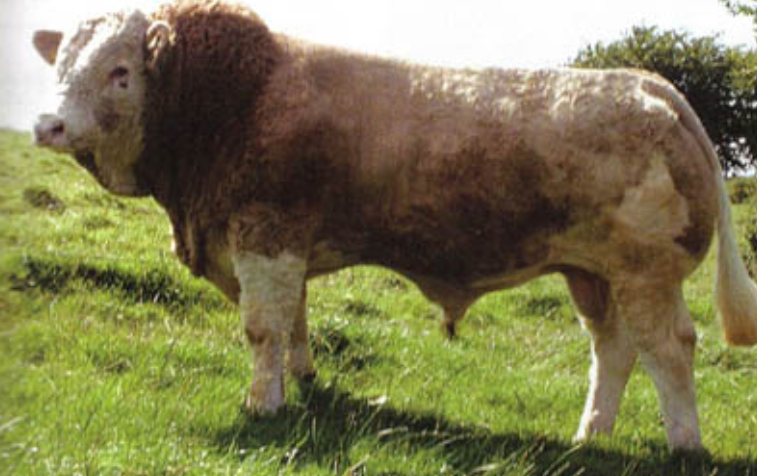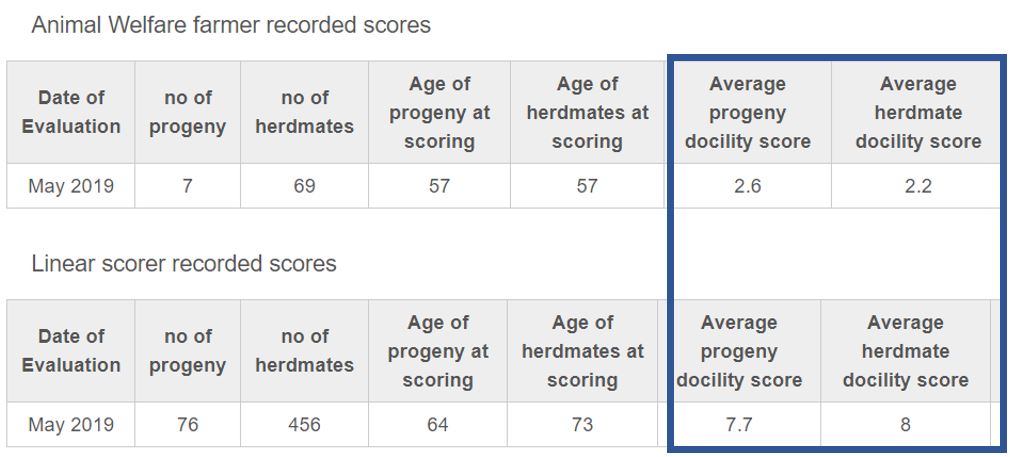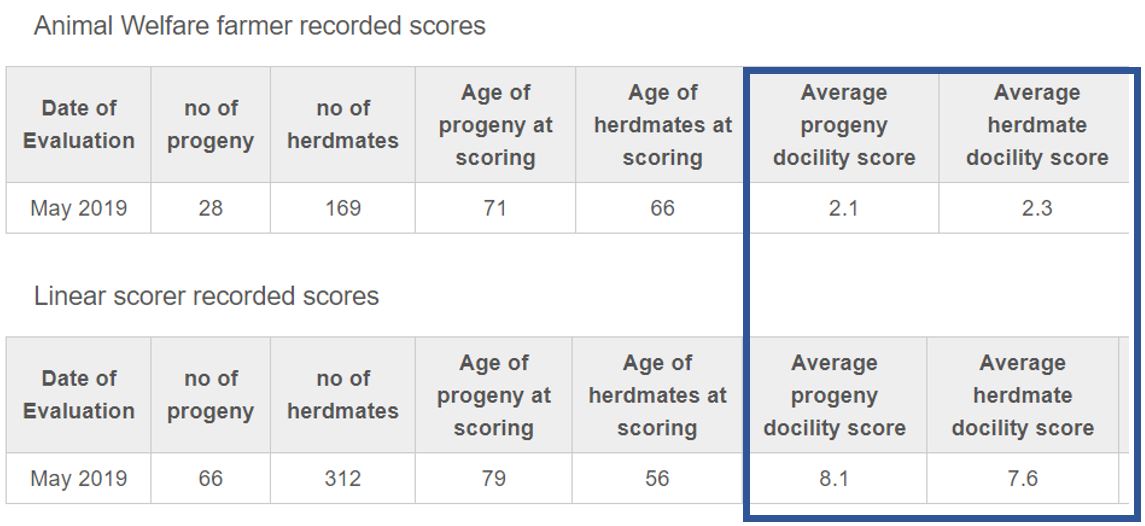There are 3 factors that will both contribute to what ‘Docility’ index figure your bull starts out with and also how it changes over time.1.Backpedigree, 2.Genotype, 3. Docility Data
1.Backpedigree
The first ‘Docility’ index that a bull will receive is called a ‘Parent Average’ index. As the name suggests it is an average figure that is calculated from the index figures that his sire & dam have at the time of his birth. If the index figure of a close relative of the bull moves up or down significantly then this will also affect the index figure of the bull himself.
- Genotype
When a sample of DNA (e.g. straw of semen) is sent off and the genotype comes back this will then alter the figure that the bull got in his first evaluation run which would have been through his ‘parent average’ as explained above. So there could be a difference in a bull’s ‘Docility’ from the calf’s very first evaluation compared to the one after the genotype has been included.
- Foreign Data
If a bull already has an index for docility in another country and this data is sent to ICBF then this will also have an impact on shaping his docility index in Ireland. ICBF routinely gets files of such index values from countries such as the UK and France.
4.Docility Data
When the bull then starts to sire calves and their docility is recorded this will be the final piece of the jigsaw in terms of his docility evaluation. By this stage his reliability % figure is probably around the 50% mark. It will be his progeny’s docility that will increase this figure. The number of herds that his progeny have their docility recorded in together with the number of herdmates that their docility is recorded against will determine by how much this reliability figure increases.
Bull examples:

In terms of step 4 above, the docility data of his progeny, this data can be seen in the ICBF ‘Animal Search’ facility:
- Go to icbf.com
- Go to the Animal Search facility down the right handside of the website and enter in ’Omorga Prince’ (or his AI Code ‘ORP’.
- Click on ‘Docility (1-5 scale) which is shaded in blue.
- Scroll down to the 2 tables that say ‘Animal Welfare farmer recorded scores’ and ‘Linear scorer recorded scores’.

Animal Welfare farmer recorded scores
This is docility data that farmers recorded on their own cattle. So, progeny of ‘Omorga Prince’ would have been evaluated by farmers for docility in their own herds. The scale here goes from 1-5 with a low score meaning better docility – quieter cattle. So, his progeny got an average score of ‘2.6’ versus the herdmates average of ‘2.2’ so they were not rated by Irish farmers as being as quiet as their herdmates.
Linear scorer recorded scores
This is docility data that an ICBF Linear scorer recorded on pedigree cattle in their owner’s herd. The scale here goes from 1-10 with a high score meaning better docility – quieter cattle. So, his progeny got an average score of ‘7.7’ versus the herdmates average of ‘8.0’ so they were not rated by ICBF Linear scorers as being as quiet as their herdmates either.
Putting these 4 pieces of information together results in ‘Omorga Prince’ being rated as a 1 star bull for docility with a 90% reliability rating.

By going through the ICBF ‘Animal Search’ as described earlier, a summary of the docility scores recorded on his progeny can also be found:

Animal Welfare farmer recorded scores
Again, the scale here goes from 1-5 with a low score meaning better docility – quieter cattle. So his progeny got an average score of ‘2.1’ versus the herdmates average of ‘2.3’ so they were rated by Irish farmers as being quieter than their herdmates.
Linear scorer recorded scores
The scale here goes from 1-10 with a high score meaning better docility – quieter cattle. So his progeny got an average score of ‘8.1’ versus the herdmates average of ‘7.6’ so they were also rated by ICBF Linear scorers as being quieter than their herdmates.
All of this data combined with his backpedigree and genomic data results in him being rated as a 5 star bull for docility.

